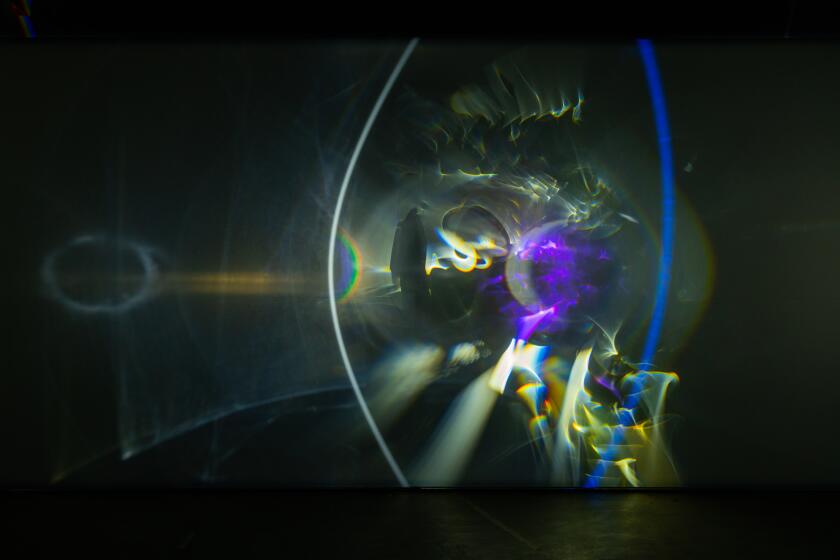Shi-Yeon Sung conducts the Philharmonic
When South Korean conductor and competition veteran Shi-Yeon Sung stepped in for an ailing Edo de Waart at the Hollywood Bowl on Tuesday night, she was amply prepared to lead the Los Angeles Philharmonic on short notice in a demanding program of Wagner, Schumann and Brahms.
Sung won first prize in 2006 at the Georg Solti Competition in Frankfurt, Germany. And in 2007, she became the first woman to be appointed assistant conductor of the Boston Symphony. That year, she also took second place (no first prize was awarded) in the Bamberg (Germany) Gustav Mahler Conducting Competition -- the same contest that Gustavo Dudamel won in 2004.
Sung may not generate the immediate onstage charisma and animal energy of Dudamel, but she knew how to make the most of limited rehearsal time and worked well with Chinese pianist Sa Chen, 29, who, like Sung, was making her Bowl debut.
Even in the opening piece, Wagner’s Prelude to “Die Meistersinger,” which didn’t quite cohere, the Philharmonic played wonderfully for Sung. The melodies soared, and complex textures never clotted. Her conducting style seemed bigger here than later. Perhaps she was trying to will Wagner’s Prelude into a more powerful whole with her sweeping hand gestures and stabbing baton.
Sung’s podium manner was more subdued in the program’s centerpiece, Schumann’s magisterial Piano Concerto in A minor. This is one war horse that never makes you feel guilty in the morning. Devoid of empty virtuosity, it’s almost Mozartean in its delicacy and quiet strength.
Last November, veteran pianist Nelson Freire gave a leaden performance of the work in Walt Disney Concert Hall with Yuri Temirkanov and the St. Petersburg Philharmonic. Chen’s reading with Sung proved more coherent and involving, conveying many, if not all, of the score’s contrasting moods. The pianist’s chamber music-like dialogues with clarinet and violins, and especially with Ariana Ghez’s touching oboe, which dominated the eventful opening Allegro, created a memorable poetic intimacy.
It helped that the Bowl’s well-tuned amplification system was on its best behavior for most of the night. In Schumann’s nuanced Intermezzo and exuberant finale, the pianist’s sparkling tone was probably as natural-sounding as it could be in an outdoor setting.
In the concert’s second half, Sung’s view of Brahms’ massive Symphony No. 1 in C minor grew in focus and stature as it progressed. The composer sometimes had a bad habit of burying his best musical ideas in overly thick-textured writing. Call it the anxiety of influence: Brahms wrote in Beethoven’s mighty shadow. But Sung and the orchestra ensured that the symphony unfolded gracefully, no small feat.
One might have wished for more drive and intensity in the somber first movement, but the two shorter serenade-like inner movements were lovely, and Sung and the Philharmonic made the heart race in the gripping Allegro finale. A Bowl audience of 6,285 responded enthusiastically.
More to Read
The biggest entertainment stories
Get our big stories about Hollywood, film, television, music, arts, culture and more right in your inbox as soon as they publish.
You may occasionally receive promotional content from the Los Angeles Times.










